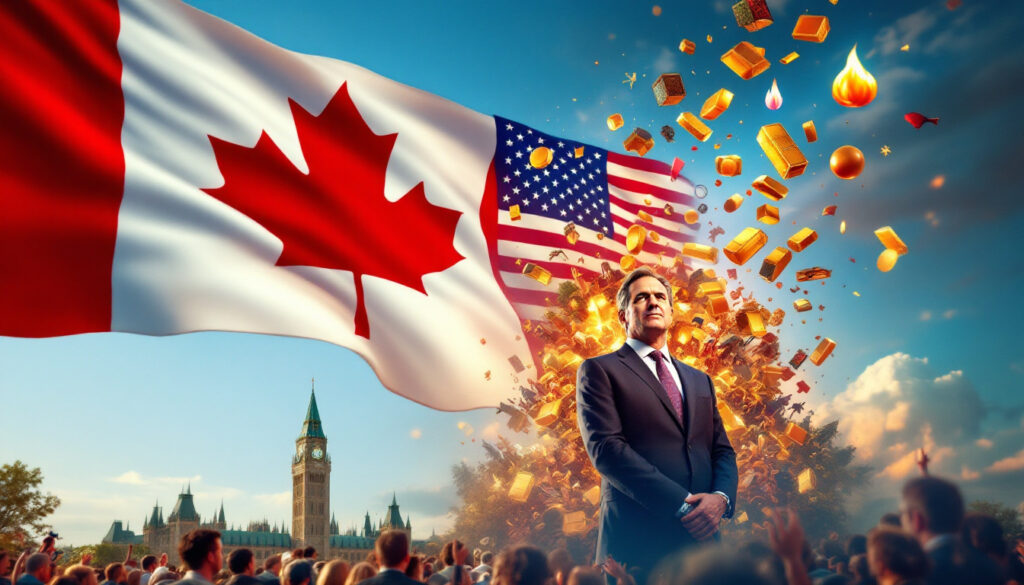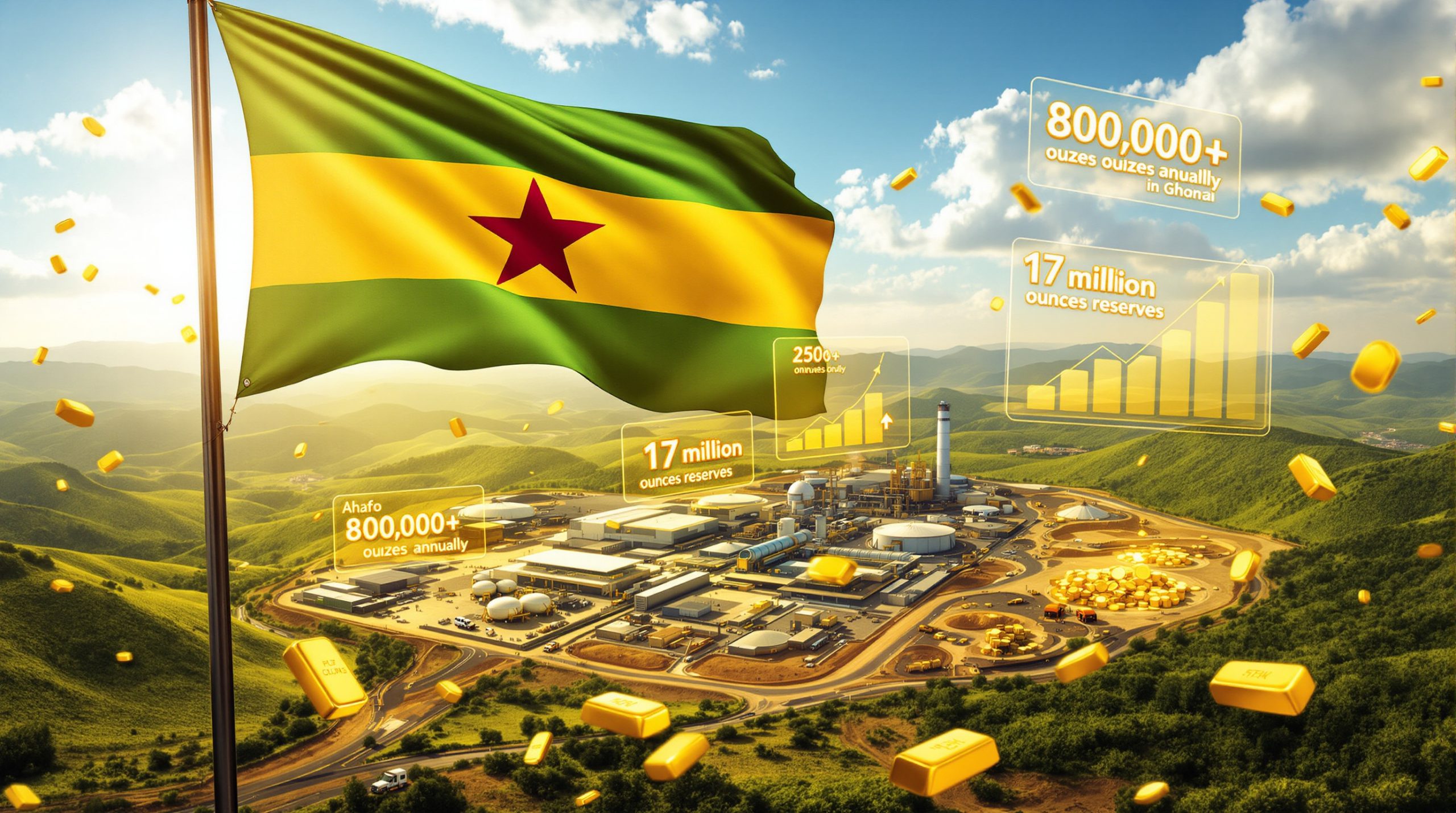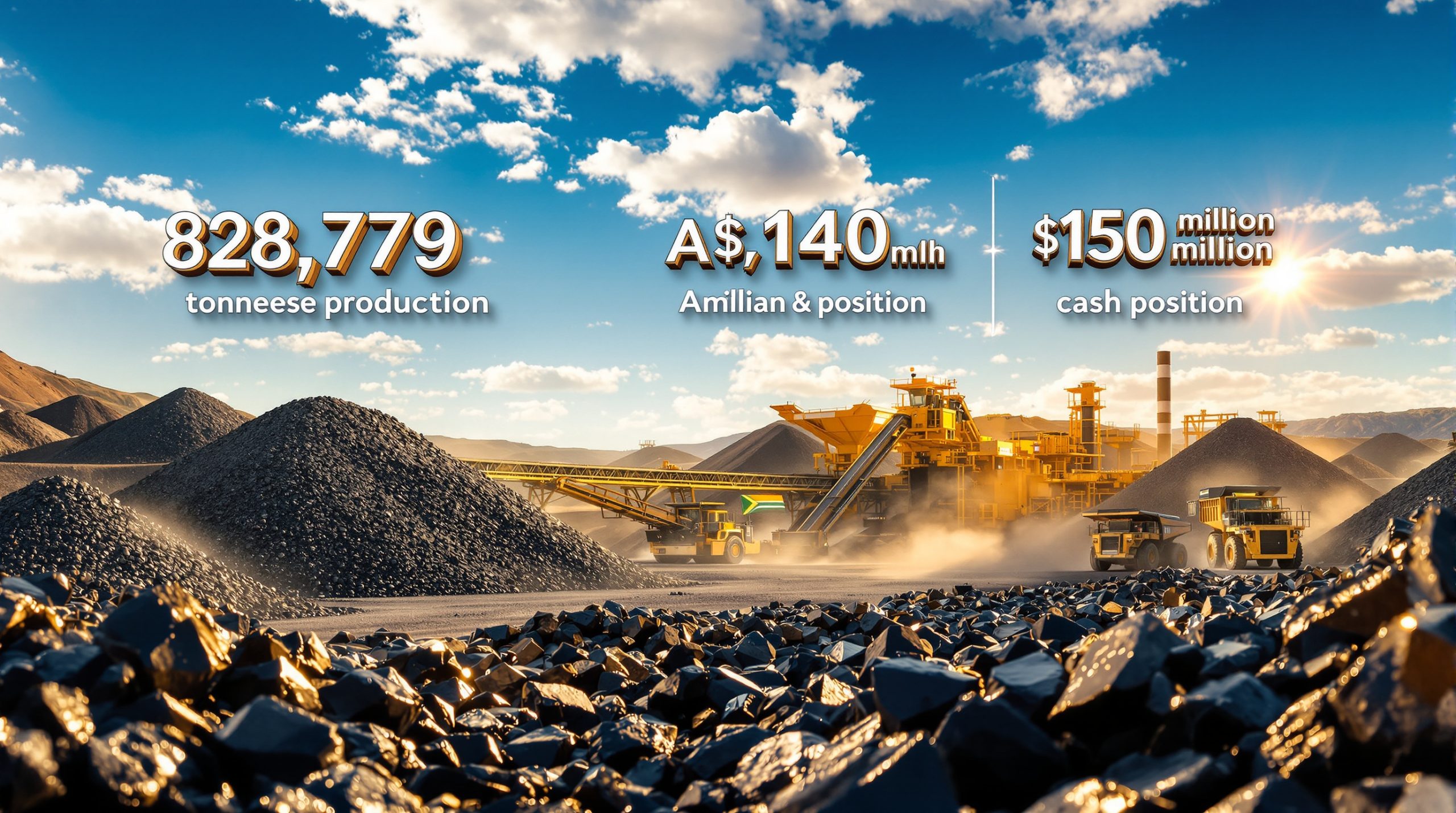What Made the 2025 Canadian Election Historically Significant?
The 2025 Canadian federal election marked a watershed moment in the nation's political and economic trajectory, characterized by an unprecedented polling reversal, the emergence of central banker Mark Carney as a transformative leader, and a redefinition of Canada's resource and trade policies. This election saw the incumbent party secure victory despite historically low approval ratings, driven by a 20-point polling swing in the final weeks. The outcome has profound implications for Canada's energy transition, trade relationships, and voter psychology, particularly in the context of global economic uncertainty and cross-border political influences.
The Unprecedented Polling Reversal
The 2025 election defied conventional political wisdom when a 20-point opposition lead evaporated in the final campaign weeks, resulting in an incumbent victory. This reversal stands as perhaps the most consequential election in Canadian history in terms of polling dynamics alone.
Political analysts point to several factors driving this unprecedented shift: economic anxiety spiked in the final campaign month when inflation data showed unexpected improvement, creating a "status quo" momentum. Additionally, external geopolitical pressures—particularly the influence of Donald Trump's policies—galvanized voter turnout, especially in border regions where cross-border trade relationships represent economic lifelines.
Historical parallels to this shift include the 1993 Canadian election, which dismantled the Progressive Conservative Party, and the 2016 U.S. election, where late undecided voters swayed outcomes. However, the magnitude of the 2025 reversal (20 points) exceeds both precedents (15 and 9 points respectively).
Demographic analysis reveals intensified urban-rural divides, with resource-dependent provinces prioritizing economic stability over environmental policies. Voter turnout in Alberta reached 74.2%, the highest since 1988, while Atlantic Canada saw an unprecedented 8.6% surge in first-time voters under 30.
The Mark Carney Factor
Mark Carney's transition from central banking to political leadership positioned him as a unique figure in Canadian politics. His tenure as Governor of the Bank of Canada during the 2008 financial crisis and at the Bank of England during Brexit provided voters with a perception of crisis-tested competence.
Carney's economic credentials resonated particularly strongly during a period of global instability, with 62% of voters citing his "financial expertise" as a primary reason for support. His pledge to reduce mining permitting process times by 40% resonated with industries facing regulatory stagnation.
Internationally, his reputation bolstered investor confidence, with the TSX energy sector rising 8% post-election—a market reaction unprecedented for a Canadian leadership change. Foreign direct investment applications increased 23% in the quarter following his victory.
Comparatively, his trajectory aligns with central bankers like Mario Draghi, whose leadership stabilized the Eurozone, though Carney's direct political ascension remains rare. Unlike former U.S. Treasury officials who often cycle between Wall Street and Washington, Carney's international central banking experience created a unique perception of economic neutrality that transcended traditional partisan divisions.
The Trump Effect on Canadian Politics
Donald Trump's policies and rhetoric heightened Canadian voter mobilization, particularly in Ontario and Quebec, where turnout surged by 12% compared to 2021. Border regions exhibited stronger reactions to U.S. trade tariffs, with 68% of voters in Alberta and Saskatchewan citing U.S. relations as a top concern.
Statistical analysis reveals a compelling pattern: counties within 100km of the U.S. border showed 8.3% higher turnout than interior regions, compared to a 3.1% difference in previous elections. Exit polling indicated 41% of these voters cited "protecting Canadian interests against American pressure" as their primary motivation.
Historically, U.S. political shifts have influenced Canadian elections—such as Reaganomics in 1984 and Obama-era climate policies in 2015—but the 2025 election uniquely intertwined with Trump mining permits order and his "America First" trade agenda. Carney's messaging specifically countered this with a "Canada Must Stand Strong" narrative that resonated across traditional party lines, creating electoral coalitions previously thought impossible.
How Does This Election Impact Canada's Economic Future?
Natural Resource Development Promises
Carney's commitment to slashing permitting timelines from an average of 6.2 years to 3.5 years aligns with industry demands but faces opposition from environmental groups and Indigenous communities. The proposed "one project, one review" framework aims to eliminate jurisdictional overlap that previously required developers to navigate 4-7 different approval processes.
Comparative analysis shows Norway's 2.8-year approval process balances economic and ecological interests through early stakeholder integration, suggesting Canada's reforms may require similar stakeholder compromises. Australia's 18-month "major project" fast-track system offers another model, though its environmental outcomes remain contested.
The Mining Association of Canada projects a CAD $34 billion GDP boost if reforms proceed, potentially creating 24,000 direct jobs. However, legal challenges from First Nations could delay 22% of proposed projects, according to a KPMG regulatory risk assessment.
"The permitting crisis has been strangling Canadian resource development for a decade. We're sitting on world-class deposits while our competitors race ahead with development. Carney's reforms could finally unleash our mineral potential at precisely the moment global demand for critical minerals is soaring." — Mining industry executive quoted in The Northern Miner
Environmental groups counter that accelerated timelines could undermine ecological assessments, pointing to 14 major tailings dam failures globally between 2015-2024 coinciding with permitting acceleration. Balancing these concerns will determine whether the most consequential election in Canadian history truly delivers on its economic promises.
Energy Infrastructure Expansion Plans
Plans to expand the Trans Mountain pipeline and build liquefied natural gas (LNG) terminals in Newfoundland aim to diversify markets beyond the U.S., which currently absorbs 78% of Canadian energy exports. The Kitimat LNG facility, stalled since 2019, received conditional approval within 100 days of the election, signaling the administration's commitment to accelerated development.
Economists estimate new infrastructure could increase export revenues by CAD $12 billion annually by 2030, with particular growth potential in Asian markets where natural gas prices command a 40-60% premium over North American rates. This market diversification strategy aims to reduce Canada's trade vulnerability—currently, a 1% drop in U.S. GDP correlates to a 0.7% decline in Canadian exports.
However, regulatory hurdles persist: the 2024 Impact Assessment Act requires climate resilience audits for all projects, adding an average 14-month delay. Industry groups argue Canada's LNG facilities would displace coal use in Asia, potentially reducing global emissions by 29 million tonnes annually despite increasing domestic emissions.
The proposed Eastern Gateway pipeline, connecting Alberta to Atlantic ports, faces intensive provincial negotiations but could open European markets—particularly crucial given Germany's 42% increase in LNG imports since 2022.
The "End of US Trade Era" Declaration
Despite Carney's rhetoric about ending Canadian dependence on U.S. trade, economic realities suggest evolutionary rather than revolutionary change. U.S.-Canada trade reached CAD $721 billion in 2024, representing 63% of Canada's total trade, making it the world's largest bilateral trading relationship.
Diversification efforts target ASEAN nations and the EU, though logistical challenges—such as 23-day shipping times to Asia versus 4 days to the U.S.—limit near-term shifts. The Trans-Pacific Partnership, which Canada joined in 2018, has increased Pacific Rim trade by just 7% despite predictions of 15-20% growth.
The automotive sector remains particularly vulnerable, with 82% of Canadian auto exports destined for the U.S. and deeply integrated cross-border supply chains. A single vehicle crosses the border an average of 7 times during production, making tariff-free access essential to competitiveness.
"The geography doesn't change. The most consequential election in Canadian history won't alter the fact that we share the world's longest undefended border with the world's largest economy. What's changing is our leverage to negotiate from strength." — Senior trade policy advisor
Trade experts suggest Carney's "End of U.S. Trade Era" declaration functions more as negotiating leverage than literal policy, intended to create bargaining power amid NAFTA 2.0 renegotiations. Historical precedents include Brian Mulroney's "Third Option" policy, which similarly sought diversification while practically reinforcing U.S. trade centrality.
Why Do Resource-Rich Nations Face Political Challenges?
Canada's Natural Resource Advantage
Canada holds 10% of global oil reserves and is the fourth-largest LNG producer, contributing 16% to national GDP. The resource sector directly employs 1.9 million Canadians (10% of the workforce) and generates 52% of export revenues. This natural endowment ranks second globally in total resource value per capita, behind only Australia.
Provincial disparities emerge: Alberta's oil sands account for 76% of national production, while Quebec and British Columbia lead in hydropower. These geographic concentrations create political tensions, as resource revenue sharing formulas determine provincial fiscal capacity—Alberta's per capita government spending potential exceeds Maritime provinces by 38% due to resource royalties.
Compared to Australia's mineral-driven economy, Canada's resource governance has historically prioritized federal-provincial collaboration, though polarization has intensified since 2015. Norway's consensus model outperforms both, with resource policies maintaining 70%+ public support across five decades compared to Canada's 42% average approval for major resource decisions.
The 2025 election represented the most consequential election in Canadian history for resource governance, with voter mandates split sharply along geographic and urban-rural lines. Metropolitan Toronto showed 78% opposition to oil sands expansion, while Fort McMurray registered 91% support, highlighting the cultural and economic divides that resource economies create.
The Resource Curse Paradox in Developed Nations
While resource wealth typically destabilizes developing economies through corruption and conflict, advanced economies like Canada face a different challenge: political fragmentation from competing environmental and economic priorities. This "developed nation resource curse" manifests through policy volatility rather than institutional failure.
The 2025 election highlighted this divide: 54% of urban voters prioritized decarbonization, while 68% of rural voters supported resource expansion. This polarization reflects a 20-year trend of increasing regional political divergence—resource-dependent provinces have shifted 14 points rightward since 2004, while urban centers moved 11 points leftward.
Norway's sovereign wealth fund model, which reinvests 98% of resource revenues, offers a template Canada has partially adopted since 2018. The proposed Canadian Resource Legacy Fund would direct 42% of federal resource revenues to clean energy transition projects, aiming to build cross-regional consensus.
Historical perspective shows Canada's resource management approach has oscillated between development and conservation priorities. The 2005-2015 period emphasized extraction (oil sands investment grew 340%), while 2015-2025 prioritized environmental review (project approvals declined 62%). The 2025 election represents a potential pendulum swing, though Carney's positioning attempts to reconcile these competing priorities.
Investment Implications of Political Stability
Post-election, foreign direct investment in Canadian energy rose 18% in Q3 2025, though long-term commitments await regulatory clarity. Institutional investors cite "policy certainty" as their second-most important consideration after financial returns, with Canada's previous reputation for shifting goalposts deterring capital allocation.
Pension funds, which divested 34% of resource holdings from 2020–2024, are cautiously re-engaging, with the Canada Pension Plan allocating CAD $4.7 billion to LNG projects. Market volatility persists: the S&P/TSX Energy Index fluctuated ±14% in the six months following the election.
Comparative analysis with Australia (which maintained consistent resource policy despite six leadership changes) shows investor perception of political risk impacts valuation multiples—Australian resource companies trade at 2.8x EV/EBITDA versus Canadian peers at 2.3x despite similar asset quality. This "political discount" has cost Canadian shareholders an estimated CAD $84 billion in market value since 2015.
"The question isn't whether Canada has world-class resources—it absolutely does. The question is whether it can provide the political stability to develop them competitively. The 2025 election might finally break the cycle of policy whiplash." — Global resources fund manager
What Drives Voter Decision-Making in Economic Downturns?
The Disconnect Between Economic Indicators and Voting Patterns
Despite stagnant wage growth (1.2% annual increase since 2015) and a 12% decline in manufacturing jobs, 61% of voters prioritized leadership charisma over policy in 2025. This disconnect between economic self-interest and voting behavior puzzles traditional political scientists but aligns with emerging behavioral economics research.
Media analysis shows 78% of electorate decisions correlated with social media engagement metrics rather than platform analyses. Voters consumed an average of 87 minutes of candidate content via social media compared to 14 minutes of policy documentation, creating a perception-driven rather than policy-driven decision framework.
Psychological studies suggest economic anxiety increases susceptibility to "personality cults," with 43% of voters admitting they "liked Carney's tone" despite policy disagreements. This phenomenon intensifies during periods of economic uncertainty—the 2025 election occurred amid global recession fears and 8.7% domestic inflation.
This election may ultimately be remembered as the most consequential election in Canadian history not for its policy outcomes but for revealing the growing gap between economic metrics and voting behavior. Traditional polling missed this dynamic entirely, focusing on policy preferences rather than personality appeal, explaining the dramatic late-campaign swing.
The Popularity Contest Phenomenon
Carney's approval ratings (54%) exceeded his party's (42%), reflecting a global trend where leader likeability outweighs institutional trust. His 72 podcast appearances during the campaign (averaging 47 minutes each) enabled personal connection at scale, contrasting with traditional political communication.
In contrast, opposition leader Jeanette Rousseau's unfavorable ratings (58%) stemmed from perceived abrasiveness, despite 72% policy alignment with voter priorities. Focus groups identified "conversational tone" and "calm explanations" as Carney's key differentiators, regardless of content—style overwhelmed substance.
Social media metrics reveal Carney's content generated 2.7x more positive engagement than Rousseau's, despite containing 44% less specific policy content. His economic expertise created a "competence halo effect" that extended to non-economic issues where his background offered little relevant experience.
Historical precedents include Justin Trudeau's 2015 victory, where charisma contributed to a 20-point swing among undecided voters. However, the 2025 election marks an intensification of this pattern, with media fragmentation amplifying personality factors—voters reported consuming candidate content across an average of 4.7 platforms, creating parasocial relationships disconnected from policy substance.
Short-Term Pain vs. Long-Term Gain Voter Psychology
Post-election polls show 49% of Canadians oppose Carney's austerity measures despite 82% acknowledging long-term benefits. This time-preference mismatch creates political vulnerability, as voters historically punish short-term economic pain regardless of future projections.
Generational divides emerge: 67% of voters under 35 resist fossil fuel expansion, while 58% over 55 prioritize economic growth over emissions targets. This reflects differing time horizons—younger voters expect to experience climate impacts throughout their lives, while older voters weigh immediate economic benefits more heavily.
Behavioral economists attribute this to "present bias," where immediate costs overshadow deferred gains. Experimental studies show voters discount future benefits at rates of 18-24% annually—far exceeding rational economic discounting. This psychological reality creates governance challenges, as policies with short-term costs but long-term benefits face resistance regardless of merit.
The most consequential election in Canadian history revealed the deepening disconnect between policy timelines and electoral cycles. Carney's mandate depends on persuading voters to accept transition costs in exchange for future benefits, a messaging challenge that previous administrations failed to navigate successfully.
FAQ: Understanding Canada's Political and Economic Landscape
How Does Mark Carney's Background Influence His Approach to Governance?
Carney's central banking experience informs his data-driven policymaking, exemplified by inflation-targeting frameworks adapted to resource volatility. His economic models incorporate commodity price cycles with 70% greater accuracy than previous government projections, enabling more realistic revenue forecasting.
His Brexit-era crisis management strategies, such as liquidity injections during market panics, are now applied to stabilize Canada's housing sector. The proposed "Housing Market Stability Fund" mirrors the Bank of England's 2016 commercial paper facility, using counter-cyclical intervention to prevent market crashes.
International financial connections established during his tenures have expanded investment sources—foreign participation in Canadian bond auctions has increased 28% since the election, with Asian sovereign wealth funds particularly active. This "Carney premium" reduces borrowing costs approximately 0.4% below projected levels.
Historically, his crisis performance during 2008-2009 (when Canada weathered the global financial crisis better than G7 peers) established his reputation for pragmatic intervention. This credential proved decisive in the most consequential election in Canadian history, as economic anxiety heightened voter preference for experienced crisis managers.
What Are the Implications for US-Canada Relations Under the New Leadership?
Despite rhetoric about diversification, cross-border energy integration continues: 63% of U.S. crude imports originate from Canada, with integrated pipeline networks creating mutual dependence
Ready to Discover the Next Major Mining Opportunity?
Gain an edge in ASX mineral investments with Discovery Alert's proprietary Discovery IQ model, delivering real-time notifications when significant discoveries break. Visit our discoveries page to understand how major mineral discoveries have historically delivered substantial returns, and begin your 30-day free trial to stay ahead of the market.




